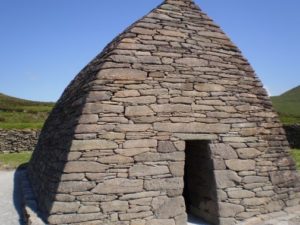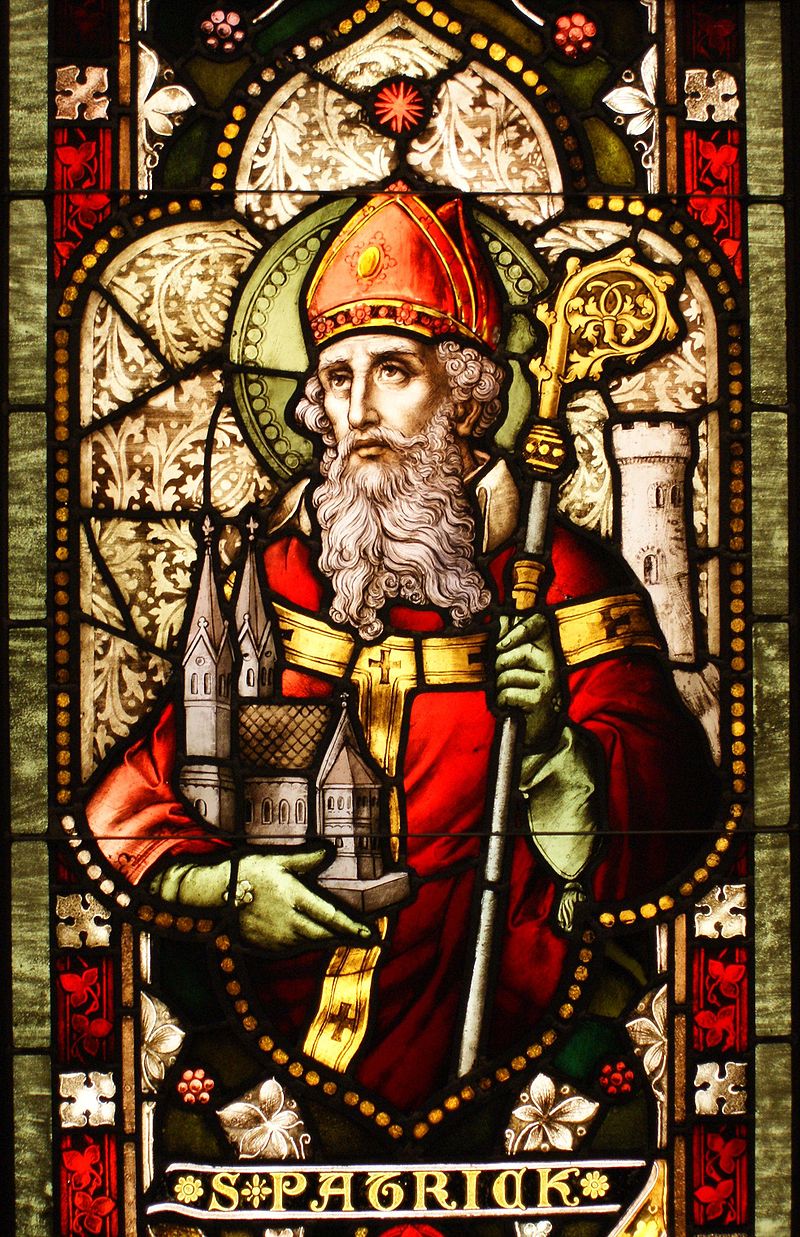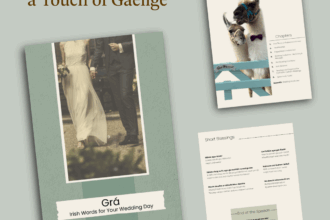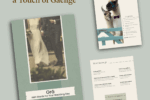The Real Story of St. Patrick by Mark E Fisher.
As I researched my historical novel, The Bonfires of Beltane, I realized what a tale the life of St. Patrick presents and how few people know it. Are you ready to hear the real story of St. Patrick?
Born to Wealth and Privilege
Patrick was born to wealthy parents in Roman Britain at the end of the fourth century AD. His father, Calpornius, was a Roman patrician with a large farmstead somewhere on the western coast. At a time when many Romans worshiped gods like Mars, Minerva, and Jupiter, Calpornius held a deaconship in the local Christian church. Baptized as an infant, Patrick rebelled against his parents’ faith. By his own admission, he was a spoiled child of privilege and an atheist. He was schooled in the classics like Virgil, Homer, and Aristotle, but he struggled with Latin and had barely begun public speaking.
Then Came the Raiders
On one tragic night, this idyllic life ended. Slave traders came from across the sea, from Hibernia—what the Roman’s called Ireland. His parents and sister were visiting relatives in the north, leaving him alone at the villa with the slaves and hired freemen. The raiders appeared suddenly at night. They captured the younger servants and slaves. They killed the older men and women, those too feeble to bring a good price on Hibernia. They stole young Patrick, a youth of but fifteen, put an iron chain around his neck, and carried him across the sea. For centuries, the Romans had feared Hibernia as a country of wild men, barbarians, and “cannibals”. We can only imagine what went through the mind of this terrified, traumatized youth.

Out on the Moors, Cold, Starving, and Alone
In Hibernia, his captors sold him into slavery, and he ended up somewhere on the western coast, probably near a village called Foclut. This child of privilege and wealth suddenly found himself out on the rainy moors, cold, starving, and alone, with the lowly job of tending sheep. He moved flocks between fields and fought off wolves. Sometimes, he slept with the other slaves back in the farmstead, behind the safety of an earthen ditch and wooden stakes.
“Holy Boy” and God’s Voice
Six years passed, and something in him changed. He used to make fun of the priests, but now he remembered the biblical stories of his youth. He began to pray. He rose before sunrise, said a hundred prayers, and before going to bed, said another hundred. The other slaves called him, “holy boy”. And he began to fast. Gradually, his faith grew. And he served his master obediently.
One night, a voice called to him in a dream, “You have fasted well. Soon you will be going home.” But how could that be? Foclut was as far from the eastern and southern ports as one could get. And escaped slaves were quickly captured. So he ignored the voice. But the next night, the voice came again, “Behold, your ship is ready.” It then gave him directions to a ship on the southern coast. He knew it was the voice of God.
The Escape
He abandoned his flock and set out on foot. Avoiding farmsteads, he traveled only at night, crossing the treacherous fens on log roads and swimming wide rivers. Without fire, his food dwindling, and fearing capture, he traversed one hundred eighty miles of open country until he arrived at a port. In the village below, a ship floated at anchor. He screwed up his courage, passed by the roundhouses, and walked up the gangplank. Irish hounds filled the deck. But after one glance, the captain sent him away. Devastated, Patrick returned to the village.
A Ship Bound for Gaul
But the sailors called him back, the captain offered him a position on the crew, and the ship sailed. Missing their destination, they landed somewhere in present-day Germany and unloaded the hounds. Then, for twenty-eight days, they wandered until they ran out of food. The captain faced Patrick. “We’re starving,” he said. “If your God is so powerful, why don’t you ask him to bring us some food, or we’ll die.” So Patrick prayed. And shortly afterward, a herd of pigs crossed their path. For two days, the sailors feasted on pork.
Back in Britain but Unsettled
It took Patrick years to find his way back to his father’s villa. No one had ever returned from Irish slavery, and his family welcomed this lean young man of twenty-one with surprise and delight. On the outside, he was physically hardened. But on the inside, he’d changed. His father wanted him to run the farmstead. But Patrick no longer fit in. He was restless, unsettled, and unhappy.
Then came the first dream. At the foot of his bed, a man named Victoricus dumped a pile of letters, broke the seal of one, and handed it to Patrick. “Holy boy,” sang the Irish voices from the letter, “Come back and walk among us!” When he woke, his heart broke for the lost of Hibernia. Would they never know the Savior? A second dream followed the first, and he knew it was God who’d spoken. Resolve filled him. He must return. He must bring the gospel message to the Irish.

Return to Ireland
What followed were years of service, as Patrick studied to become a deacon in the local church then a priest. In Lérins, an island off the southern coast of Gaul, he pestered his bishop to send him to Ireland, but the bishop refused. Instead, he sent a man named Palladius. By all accounts, Palladius’ mission failed miserably. Only then was Patrick appointed bishop, necessary to ordain priests, and ordered to Ireland.
When he landed in the northern inlet of Strangford Loch, Patrick was probably thirty years old. To the Irish, he was like one of their own. He understood them, and he made converts. He brought them a God who loved, so unlike the fearsome, angry spirits of the druids that required constant sacrifices. Into a land mired in spiritual darkness, Patrick brought a teaching of light and hope. And on the northern half of the island, he left behind hundreds of small churches, thousands of new believers.
We can make the case that because of Patrick and Irish Christianity, during Europe’s later chaos and barbarian upheavals, the Irish monks preserved the great works of western civilization. There is much more to Patrick’s story than what we’ve shown. But perhaps we’ve given a hint of what happens when a man listens to the voice of God and does his bidding. Surely, Patrick changed not only Ireland, but the world.
Mark is the author of The Bonfires of Beltane, a novel of Christian historical fiction set in ancient Celtic Ireland at the time of St. Patrick. You can find his book on Amazon or at www.MarkFisherAuthor.com/Marks-Books.
Sources for this article: Patrick’s own Confessions, Philip Freeman’s St. Patrick of Ireland, Thomas Cahill’s How the Irish Saved Civilization, and T.W. Moody and F.X. Martin’s The Course of Irish History.









